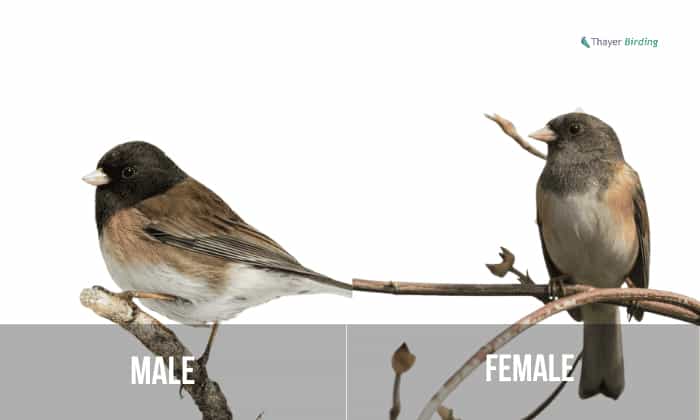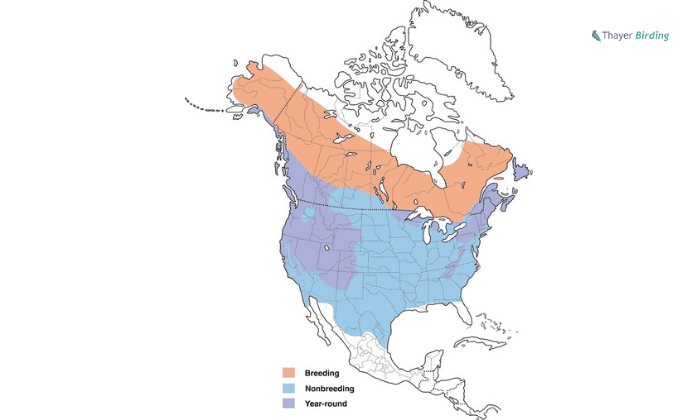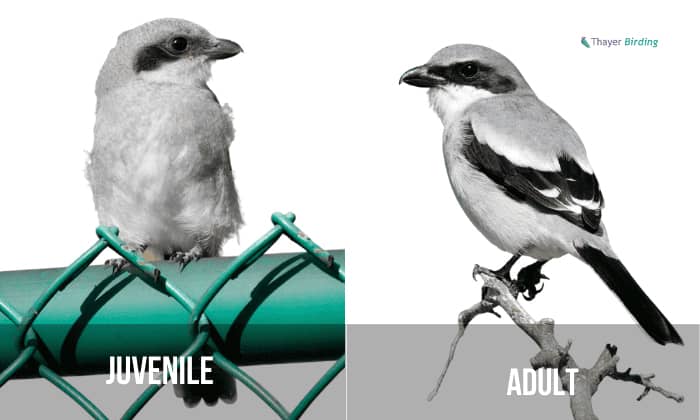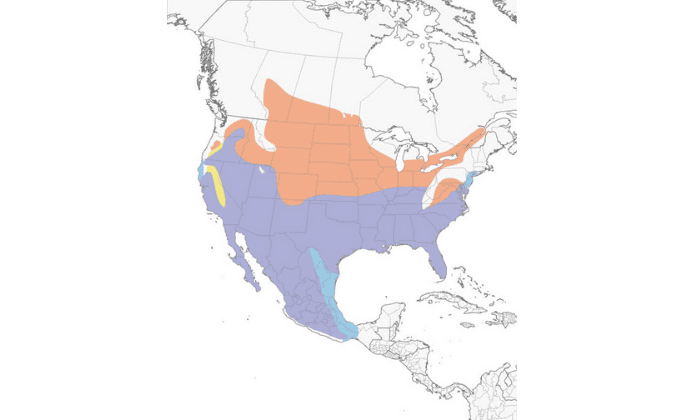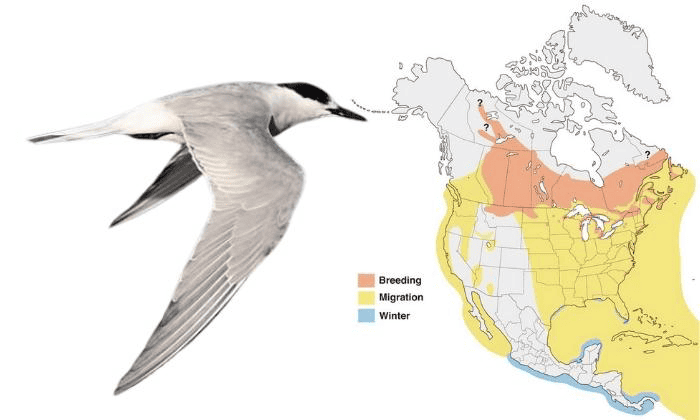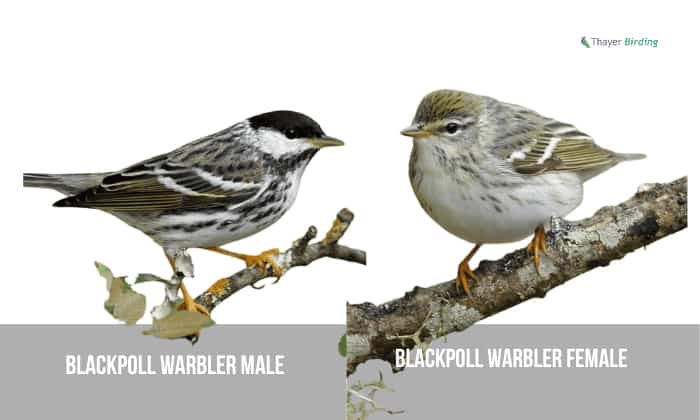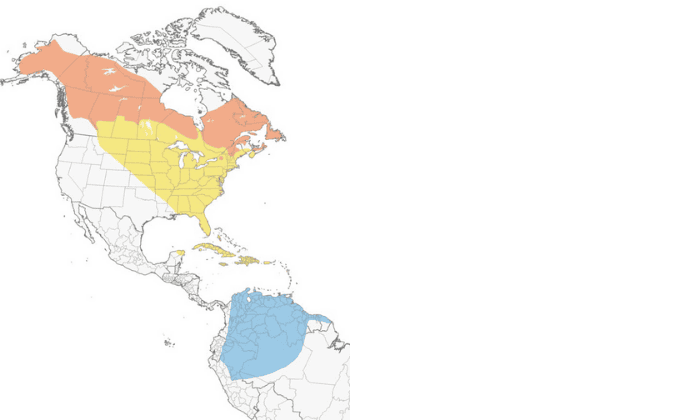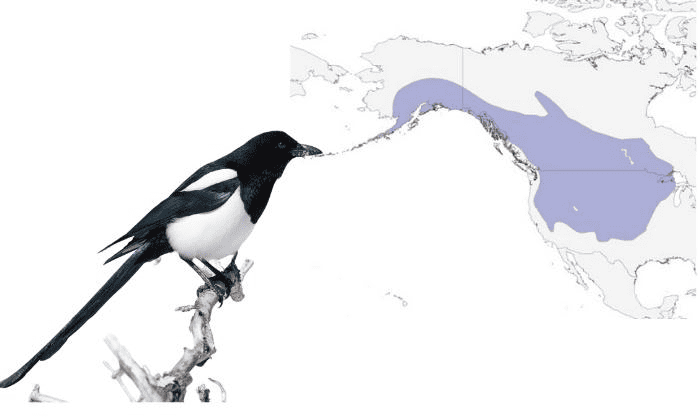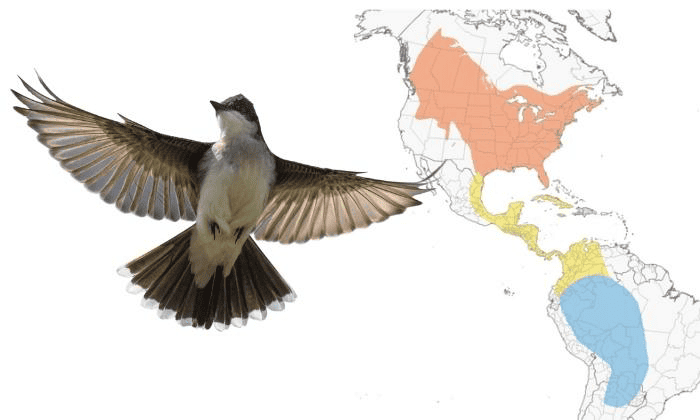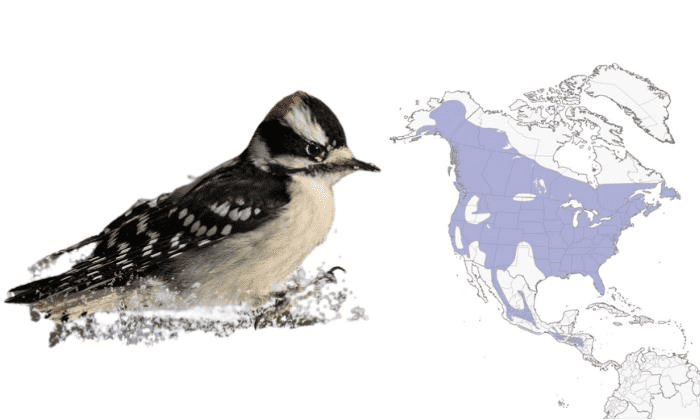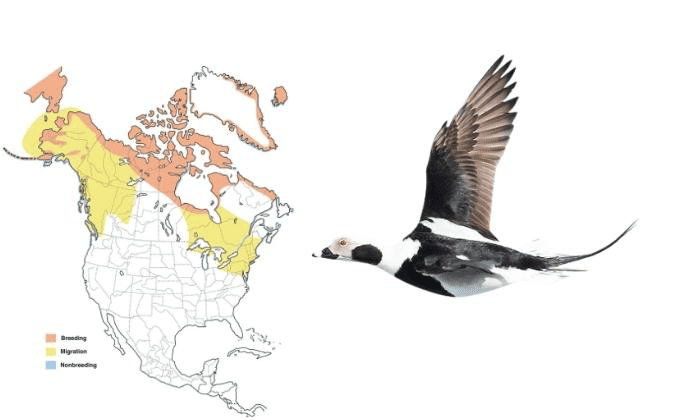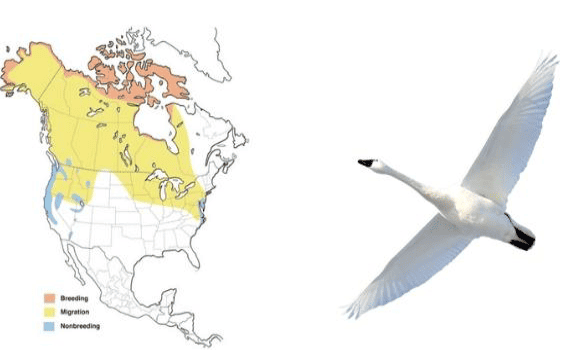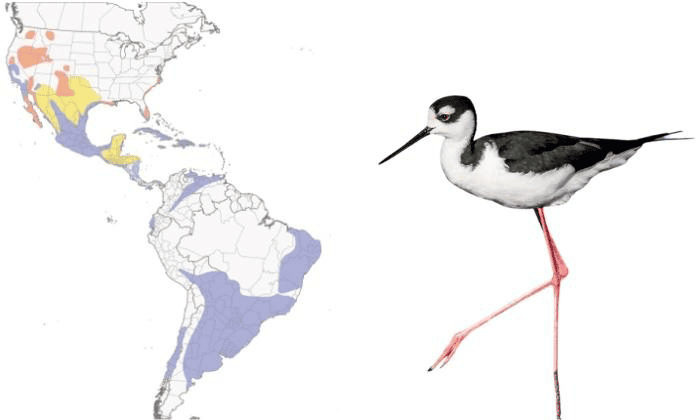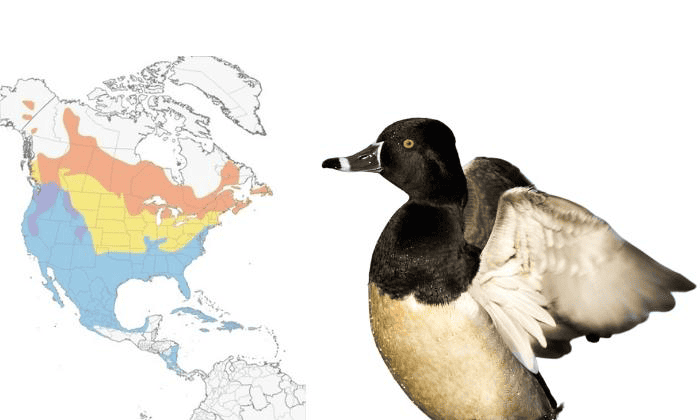There are tons of stunning colorful birds in North America, but did you know that the black and white birds in Michigan are just as impressive?
We have an article here about Michigan bird identification to help you recognize black and white avians in the state, from common backyard visitors to those you can only spot once in a while.
Table of Contents
Common Black And White Birds In Michigan
How common are the small white birds with black wings you see in Michigan? Do most black and white birds you see look the same? Check out this list of species native to Michigan and decide for yourself.
1. Dark-eyed Junco
- Scientific Name: Junco hyemalis
- Weight Range: 18 to 30 grams
- Approximate Length: 13 to 17.5 centimeters
- Wingspan: 18 to 25 centimeters
This medium-sized sparrow is well known for its pitch-black eyes. You can easily recognize them with their pink bills, dark gray heads, ashen gray sides and white bellies. Females are paler than males and have brown crowns and backs.
Dark-eyed Juncos are present in the mixed-coniferous and pine forests of northern Michigan. They go further north during the mating season and can nest under buildings. In the winter, they are frequent visitors of bird feeders, where they forage on the ground for fallen seeds.
source
Since these sparrows are ground birds, you will find them hopping all around the trees, shrubs, and lawns. You might hear their high chipping notes before spotting them.
2. Loggerhead Shrike
- Scientific Name: Lanius ludovicianus
- Weight Range: 34 to 51 grams
- Approximate Length: 20 to 23 centimeters
- Wingspan: 27.9 to 32 centimeters
What makes this songbird unique is the black mask that seems to cover its dark eyes. Other features that can help you distinguish this bird are its long tails, white throats, black bills, and distinct white wing patches.
Both sexes share the same color pattern, except for juveniles, which are more brownish than gray.
This gray black and white bird of Michigan inhabits open spaces with dispersed trees and shrubs. Sometimes, you can find them in semi-open spaces and heavily wooded forests. In the winter, they are commonly found perched on wires and fences while scanning the vicinity for their prey.
source
Loggerhead Shrikes earned the nickname butcherbird or thorn bird because of their eating habits. They are famous for piercing their prey on thorns or barbed wires, leaving the latter incapacitated for consumption.
3. Common Tern
- Scientific Name: Sterna hirundo
- Weight Range: 110 to 141 grams
- Approximate Length: 31 to 35 centimeters
- Wingspan: 77 to 98 centimeters
Common Terns have light-gray bodies, orange legs and bills, black beak tips, and a distinct black cap.
When breeding, this cap looks darker without orange coloring and stretches until the back of the head.
These seabirds prefer open waters, barrier beaches, rocky islands, and salt marshes. You’ll find them in Michigan during summer. They are highly migratory birds and spend winter in the southern hemisphere.
It is not difficult to know if there are Common Terns around, since they will make their presence known with their loud calls. These birds are skilled divers and flyers. The elegant rowing wingbeats and expert dive for their prey below the water’s surface are both impressive.
4. Blackpoll Warbler
- Scientific Name: Setophaga striata
- Weight Range: 9.7 to 21 grams
- Approximate Length: 12.5 to 15 centimeters
- Wingspan: 20 to 25 centimeters
These warblers have a small build with short tails, thin bills, and orange legs but longer wings than other warbler species.
Male Blackpoll Warblers are recognized for their black heads and chins, white cheeks, yellow spots on their side, and pointed bills. Females, meanwhile, have softened plumage color with brown and grays.
Blackpoll Warblers can be spotted in Michigan during spring and fall. They move around in flocks and settle on high elevations in woodlands, mountains, and bushy areas. South America is their winter home that they can fly to in a 3-day nonstop migration trip.
source
Don’t confuse their quick chirping for an insect. These birds often sing while searching for food and in the spring while migrating, but not in the fall.
5. Black-billed Magpie
- Scientific Name: Pica hudsonia
- Weight Range: 145 to 210 grams
- Approximate Length: 45 to 60 centimeters
- Wingspan: 56 to 61 centimeters
This black bird with white chest, often referred to as the American Magpie, is known for its heavy bills, white bellies, and black diamond-shaped tails.
The iridescent blue-green wings and tails are eye-catching, especially under the light. To easily distinguish males from females, the latter have hood plumage that is grayish at the bottom.
Black-billed Magpies are one of the most stunning birds with black and white feathers in Michigan. They also frequent the coast of southern Alaska, central British Columbia, and all Rocky Mountain States, even New Mexico.
You can find them in riverside areas with plenty of thickets or perched on fence posts and trees.
These loud birds are extremely social birds, flying around in a flock and sharing a carrion meal together.
6. Eastern Kingbird
- Scientific Name: Tyrannus tyrannus
- Weight Range: 33 to 55 grams
- Approximate Length: 19 to 23 centimeters
- Wingspan: 33 to 38 centimeters
Eastern Kingbirds have black upperparts and white underparts, a color pattern that makes them look like a businessman wearing a suit. Their bills are black and long, heads nearly as dark as their eyes, and a white tail tip you can recognize anywhere.
You can spot this small black and white bird in the open areas of North America for the breeding season. This is because once summer is over, they’ll migrate back to the tropical forests of South America for winter.
Eastern Kingbirds are usually found on top of utility lines or open trees, waiting for prey to attack. Once they’re done, they will return to the exact spot they left and wait again. No wonder these birds are called notorious visual hunters.
7. Hairy Woodpecker
- Scientific Name: Leuconotopicus villosus
- Weight Range: 40 to 95 grams
- Approximate Length: 18 to 26 centimeters
- Wingspan: 33 to 41 centimeters
This medium-sized bird has a square head, a long tail, and a slender long beak that is almost the same length as its head. The black upperparts and white underparts with white wing spots are present in both sexes. You can tell them apart with the red head patch of the males, which are absent in females.
Hairy Woodpeckers are often confused with Downy Woodpeckers. Some distinguishing features to look for in identifying a Hairy Woodpecker are their larger size, longer bill, and completely white outer-tail feathers.
Find this black and white speckled bird in the mature forests everywhere in America. In Michigan, you can spot these woodpeckers in urban parks, orchards, swamps, suburban backyards, and cemeteries.
Hairy Woodpeckers hike up along tree branches and use their strong beaks to build nests in trees. Similar to other woodpeckers, they have a slow and wavy flight pattern.
Uncommon Black And White Birds In Michigan
Michigan has some rare bird species. How uncommon? They are only observed a few times a year! Here are 4 of these black and white Michigan birds.
1. Long-tailed Duck
- Scientific Name: Clangula hyemalis
- Weight Range: 500 to 1100 grams
- Approximate Length: 38 to 47 centimeters
- Wingspan: 71 to 72 centimeters
This medium-sized sea duck was previously referred to as the oldsquaw. Its belly feathers are white while the rest of its plumage undergoes intricate molting, giving this species a different color pattern in the summer and winter.
In winter, male Long-tailed Ducks have white heads, necks, and bodies with black breast and cheek patches. Females have brown crowns and bodies with a short tail. In the summer, the male’s cheek patch becomes white, and females have a dark head instead of a white one.
Long-tailed Ducks prefer the cold waters of large lakes and open oceans of the north in the high Arctic. There is a flock of them in the Great Lakes, Hudson Bay, Bering Sea, and Lake Michigan in winter.
These ducks are great divers and strong swimmers. With wings partly open and propelling feet, they forage and feed down to 30 inches of the water surface.
2. Tundra Swan
- Scientific Name: Cygnus columbianus
- Weight Range: 3,800 to 10,500 grams
- Approximate Length: 120 to 147 centimeters
- Wingspan: 168 centimeters
Tundra Swans are large black and white birds with long necks and heavy bodies. Their feathers are entirely white; their feet and legs black, and their eyes are brown.
Juvenile Tundra Swans can be distinguished by their pink bills without yellow spots and pale brown plumage with gray and white.
These waterfowls live in the Arctic tundra. Only a few of their population can be found in Michigan throughout the year, mainly during winter.
Aquatic vegetation makes up most of these birds’ diet alongside corn, potatoes, and grains. They use their long necks to forage under the water’s surface and build nests near it.
3. Black-necked Stilt
- Scientific Name: Himantopus mexicanu
- Weight Range: 150 to 180 grams
- Approximate Length: 35 to 39 centimeters
- Wingspan: 71 to 75 centimeters
- These shorebirds are basically black on top and white underneath, though females will have brown plumage without the greenish tint of males at the back of the wings.
The thin carnation-colored stilt legs and above-the-eye white patch make this species unique and delicate-looking.
Black-necked stilts are present throughout the year in shallow waters of open countries where marsh growth is plentiful, but they’re very rare in Michigan. You can also find them in altered habitats like flooded fields, sewage ponds, and evaporation pools.
Aquatic invertebrates are part of the Black-necked Stilts’ diet. They wade instead of swim to chase their prey and mainly look for food near water.
4. Ring-necked Duck
- Scientific Name: Aythya collaris
- Weight Range: 490 to 910 grams
- Approximate Length: 39 to 46 centimeters
- Wingspan: 62 to 63 centimeters
Ring-necked Ducks are medium-sized birds known for their unique peaked head shape and crown that gets flattened when plunging into the water.
Males are black and gray all over, with a white mark on the breast and two distinct white rings around their beaks. Females are a combination of gray-brown and rich brown plumage and are slightly smaller.
These diving ducks prefer small bodies of water but sometimes join other diving duck species on large lakes. They breed in North America and Canada and winter in southern North America.
You can see them in Michigan around October to May.
As powerful and swift flyers, Ring-necked Ducks prepare for flight by leaping up from the water, which is less strenuous than what other diving ducks do.
Conclusion
After learning about the names of black and white birds in Michigan, you are now ready to find and identify them. You can also share this knowledge with your family and friends.
Do you know anyone who’ll appreciate learning about these amazing and unique birds? Share this article with them!

George and I became friends after a birdwatching trip with our new group. And we have been enjoying every adventure together. When he told me the idea of establishing a site that shares our experiences and fun, I immediately agreed. After trials and errors, here we have Thayerbirding.



